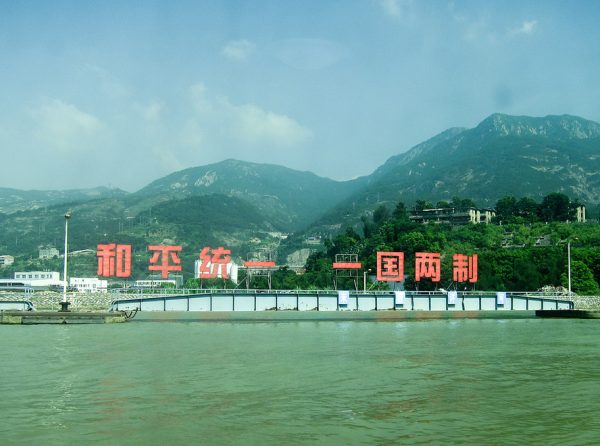China is promoting new economic opportunities for Taiwanese people while at the same time ramping up military activity around the island it claims as its own.
Experts say the “carrots and sticks” approach, which Beijing has employed for years, signals a choice between peaceful “reunification” and military aggression ahead of a Taiwanese presidential election next year.
This week, China unveiled a plan for an “integrated development demonstration zone” in its southeastern Fujian province, the closest to self-governed, democratic Taiwan. Taipei strongly rejects China’s sovereignty claims.
As part of the plan, Beijing is encouraging Taiwanese companies to list on Chinese stock exchanges and is promising better conditions for Taiwanese investors and a more “relaxed” environment for travel, according to a statement Tuesday by the Communist Party’s Central Committee and the State Council, China’s Cabinet.
Diplomat Brief
Weekly Newsletter
Get briefed on the story of the week, and developing stories to watch across the Asia-Pacific.
Get the Newsletter
“The goal is to build an integrated development demonstration zone in the entire area of Fujian province to fully show the effect of Fujian as the first-choice destination for Taiwanese people and enterprises to pursue development on the mainland,” Pan Xianzhang, deputy director of the Taiwan Affairs Office of the State Council, said at a news conference Thursday.
The economic overture comes at a time of increased Chinese military activity around Taiwan. On Thursday, Taiwan’s defense ministry said it spotted 68 Chinese warplanes and 10 warships near the island over the previous 24 hours. It said 40 of the aircraft entered Taiwan’s air defense zone, in the latest of near-daily incursions meant to threaten Taiwan’s government, which Beijing deems “separatist.”
Earlier this week, China sailed an aircraft carrier 70 miles (110 kilometers) to Taiwan’s southeast.
Pairing economic incentives with military coercion of Taiwan “is a very old playbook on China’s part,” said Drew Thompson, a research fellow at the Lee Kuan Yew School of Public Policy at the National University of Singapore.
Advertisement
Many of the policies underlined in the Fujian plan, such as easy access for Taiwanese to the mainland, were already in place, making the initiative more performative than substantive, he added.
“At the end of the day, this is not an actual economic plan for integration of China with Taiwan,” Thompson said. “It’s a political tool that seeks to drive a wedge between the ruling party and that portion of the electorate that probably doesn’t support the ruling party anyway.”
Taiwan is set to have presidential elections in January. The front-runner, current Vice President William Lai, is considered by Beijing a separatist. China has refused to hold talks with Lai’s party, the Democratic Progressive Party, which has been in power since 2016.
Taiwan’s Mainland Affairs Council said the document was a compilation of existing policies and measures.
“It is completely one-sided wishful thinking to try and seduce our members of the public and enterprises to the mainland and integrate into their system, laws, and norms and accept the leadership of the Communist Party,” it said.
The council also urged Beijing to respect Taiwan’s “insistence” on freedom and democracy.
Some of the measures zero in on outlying Taiwanese islands that are closer to Fujian province than to Taiwan’s main island, such as Matsu and Kinmen, which Chinese state media have said should play “an even more prominent role” in boosting ties.
According to Xinhua, China’s state news agency, the plan calls for Matsu and Kinmen to be linked with the mainland via “pair cities”: Matsu with Fuzhou, and Kinmen with Xiamen. Residents of Matsu and Kinmen “can enjoy the same treatment as local residents” when living in Fuzhou and Xiamen, respectively. China also plans to pursue joint infrastructure projects, including supplying electricity and gas to the outlying islands from the mainland.
Depending on the results of Taiwan’s presidential election, the proposal from China could find support in Taipei. Presidential candidate Ko Wen-je has voiced support for expanding links between Kinmen and China, including the controversial proposal of a bridge linking Kinmen and Xiamen.

